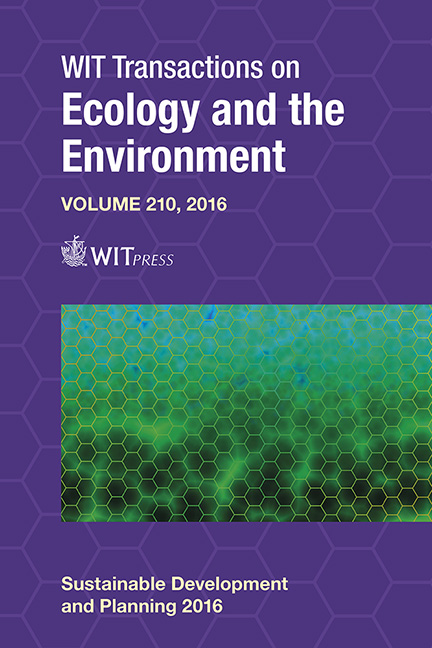Environmental Impact Of Motorcycle Replacement Exhaust Systems In Sao Paulo City
Price
Free (open access)
Transaction
Volume
210
Pages
12
Page Range
641 - 652
Published
2017
Size
656 kb
Paper DOI
10.2495/SDP160541
Copyright
WIT Press
Author(s)
A. L. S. Forcetto, L. C. Daemme
Abstract
There are about 900,000 motorcycles in the Sao Paulo Metropolitan Region (SPMR), comprising 12.2% of the vehicle fleet in 2014, with a 15% presence in the traffic flow. They contribute 23% of the Equivalent Noise Level (Leq) of road noise and are responsible for 21% of all CO, 12.8% of HC and 2.1% of NOx emissions. Non Original Exhaust Systems (NOES) can be found in 16% of the motorcycles in SPMR; these usually have no catalyser and fewer internal parts than an original exhaust system from the Original Equipment Manufacturer (OEM), in order to reduce gas flow counter-pressure and to produce a typical “popping” sound. According to users, the main reasons for using NOES are “safety”, “I like loud noise” and “performance”. Regarding noise, motorcycles equipped with NOES have a sound level 12.8 dB(A) higher than those with original exhaust systems and correspond to 62% of Leq generated from motorcycles. The use of NOES for professional “moto freighters” can result, among other occupational diseases, in Noise-Inducted Hearing Loss. With respect to gaseous emissions, NOES bring an individual increment of 1.2 to 12 times the emissions of CO, HC and NOx, compared with OEM mufflers; that adds yearly in SPMR about 1,277 t of CO, 230 t of HC and 310 t of NOx, drawing motorcycles with this equipment back to levels before Brazilian phase M3, equivalent to Euro 3.
Keywords
noise, gaseous pollution, tampered motorcycles, exhaust system





